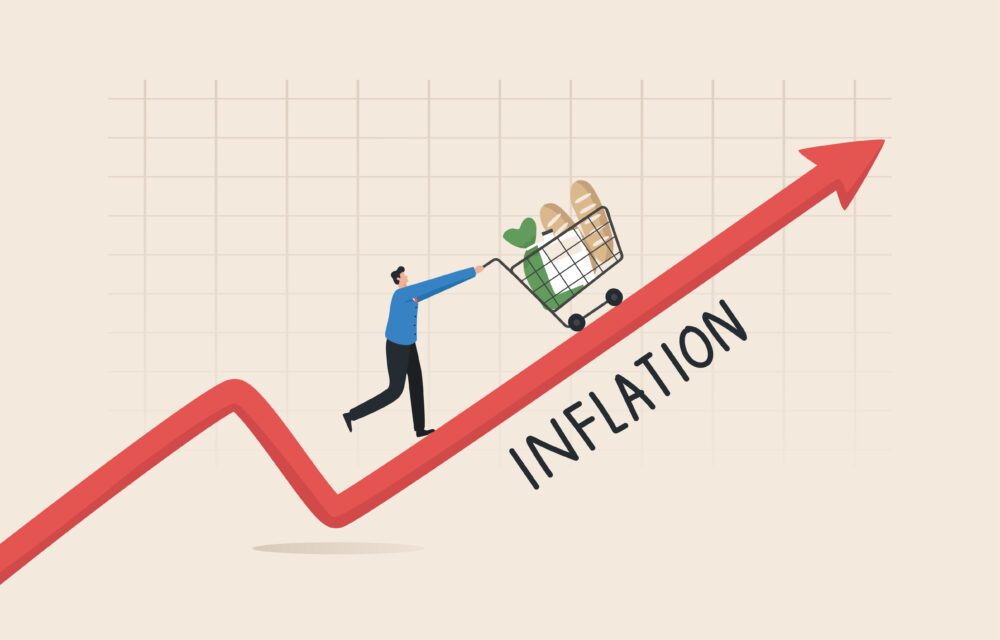Have you ever been baffled by a sudden rise in your home EMI or found that your monthly groceries are costing more? These aren’t random fluctuations. They’re tied to broader economic changes in our country. By understanding the economy’s pulse, you can better anticipate these shifts and plan your finances more effectively.
With India’s dynamic economic landscape, it’s essential to grasp how larger economic trends can directly touch our daily lives and financial decisions. This blog will break down key economic indicators and their relevance, helping you align your financial strategies with the nation’s economic heartbeat.
The Significance of Macroeconomic Indicators
Macroeconomic indicators aren’t just jargon used by economists and policymakers. They are vital signals that can help you understand the economic environment and, consequently, make smarter financial decisions.
But what exactly are these indicators, and why should you, as an individual, pay attention to them?
These indicators, such as inflation, GDP growth, and unemployment rate, act like the economy’s vital signs. They reveal its current status and potential future shifts, providing a snapshot of the nation’s economic health.
For an individual, keeping an eye on these indicators can offer insights into when might be a good time to invest, buy a property, or perhaps tighten the purse strings a bit.
Think of it as having a weather forecast for your savings and investments. While you can’t change the economic climate, understanding it helps you prepare and protect your finances. This ensures you’re not caught off-guard by any financial storms.
Understanding Business Cycles
Business cycles are inherent to every economy, including India’s. These cycles, characterised by phases of expansion, slowdown, recession, and recovery, influence various economic aspects, from employment rates to consumer spending. But how does this macroeconomic phenomenon trickle down to impact your personal finances?
In an expansion phase, the economy grows, job opportunities rise, and generally, people experience a boost in their income. This phase might seem like the perfect time to make investments or big purchases. However, it’s crucial to remember that what goes up must come down.
When the economy enters the slowdown phase, growth begins to decelerate, and while the economy is still growing, it does so at a reducing rate. This is a critical period where careful financial planning is pivotal to avoid potential pitfalls in the upcoming phases.
The recession phase sees the economy contracting, with diminishing growth, rising unemployment, and reduced consumer spending. This downturn impacts not only businesses but also individual incomes and job security. Your financial planning needs to be robust and flexible to navigate through these economic challenges.
Finally, in the recovery phase, the economy stabilises and starts showing signs of improvement, gradually climbing back towards more stable times. Understanding these cycles and their characteristics enables you to anticipate potential financial challenges and opportunities, allowing you to align your financial strategies accordingly.
In the following sections, we will delve deeper into specific indicators like inflation, GDP growth, and unemployment, and explore how they fluctuate during these business cycles, influencing your financial planning and decision-making.
Key Macroeconomic Indicators and Your Finances
While we’ve established that the economy influences your personal finances, let’s delve into a few key macroeconomic indicators that you should keep an eye on. These indicators not only provide a glimpse into the health and trajectory of the economy but also subtly shape your financial planning and decision-making.
Inflation: Your Purchasing Power’s Silent Adversary
Inflation is a term you might have come across in daily news or financial reports. Simply put, it represents the rate at which the general level of prices for goods and services rises, and subsequently, purchasing power is eroded. For instance, if you’ve noticed that the cost of your favourite snack has doubled over a decade, that’s inflation at work.
Inflation impacts your savings and the real value of your money. If your savings account offers an interest rate of 4%, but the inflation rate is 6%, the real value of your savings is actually decreasing. Understanding inflation helps you make informed decisions about your spending, saving, and investment to ensure that your money grows at a rate that at least outpaces inflation.
GDP Growth: A Measure of Economic Health
Gross Domestic Product (GDP) growth rate is a measure that reflects the economic health of a country. It represents the total value of all goods and services produced over a specific time period within a nation’s borders. A growing GDP usually signals a healthy economy, which is often accompanied by a rise in employment and potentially, an increase in wages.
However, it’s crucial to note that while a growing GDP paints a positive picture, a declining GDP can indicate an economic slowdown, which might mean fewer job opportunities and potentially stagnant or reduced wages. Being aware of GDP growth helps you anticipate economic trends and plan your finances, such as investments and major purchases, accordingly.
Unemployment Rate: Gauging Job Market Stability
The unemployment rate is another crucial indicator to monitor. It represents the percentage of the total workforce that is unemployed and actively seeking employment. A rising unemployment rate might indicate a sluggish economy, while a decreasing rate could signal economic growth.
A stable job market is crucial for consistent income, paying off debts, and saving for the future. By understanding trends in unemployment, you can better gauge the stability of your own employment sector and potentially foresee any risks to your income.
Monetary Policy and Interest Rates: The Cost of Borrowing
Monetary policy, often enacted through changes in interest rates, influences your loans and savings. When the Reserve Bank of India (RBI) alters the repo rate (the rate at which commercial banks borrow money from the RBI), it indirectly affects the interest rates that consumers see for things like savings accounts, fixed deposits, and loans.
For instance, if the RBI lowers interest rates, taking a home loan or car loan becomes cheaper, but the interest you earn on your savings might also decrease. Conversely, higher interest rates mean higher loan costs but potentially better returns on savings and fixed deposits.
Fiscal Policy: Government Spending and Your Finances
Fiscal policy, which encompasses government spending and taxation, also plays a pivotal role in the economy and, by extension, your personal finances. When the government spends more than it earns, it results in a fiscal deficit, which is often financed through borrowing.
This borrowing can impact interest rates and, consequently, influence your loans and investments. Moreover, the government’s spending and taxation policies can directly impact your disposable income and the broader economic environment. For instance, a tax cut might increase your disposable income, while increased government spending can potentially boost economic activity.
Interplay of Economic Indicators
Every economic indicator is part of a vast, interconnected web. For instance, inflation might prompt changes in monetary policy, which in turn could influence GDP growth and unemployment. Understanding these ties is essential for a comprehensive view of the economy and its ripple effects on your finances.
Inflation isn’t just about prices rising; it’s a domino that can topple other economic dominos. Similarly, the fiscal policy isn’t an isolated strategy. Government borrowing, driven by fiscal deficits, can sway interest rates, affecting both your loans and investments.
Concluding Thoughts on Financial Planning
Understanding macroeconomics is more than an academic exercise; it’s a tool for smarter financial decisions. By keeping an eye on these indicators, you’re better equipped to navigate the complexities of personal finance.
The economy is ever-changing, but with knowledge, you can be prepared. It’s not just about reacting to the present but planning for the future. By aligning your financial strategies with economic insights, you’re setting a course for a secure financial horizon.
In conclusion, aligning your financial journey with economic insights ensures you’re not just reacting but proactively planning, always steering towards your financial goals.






